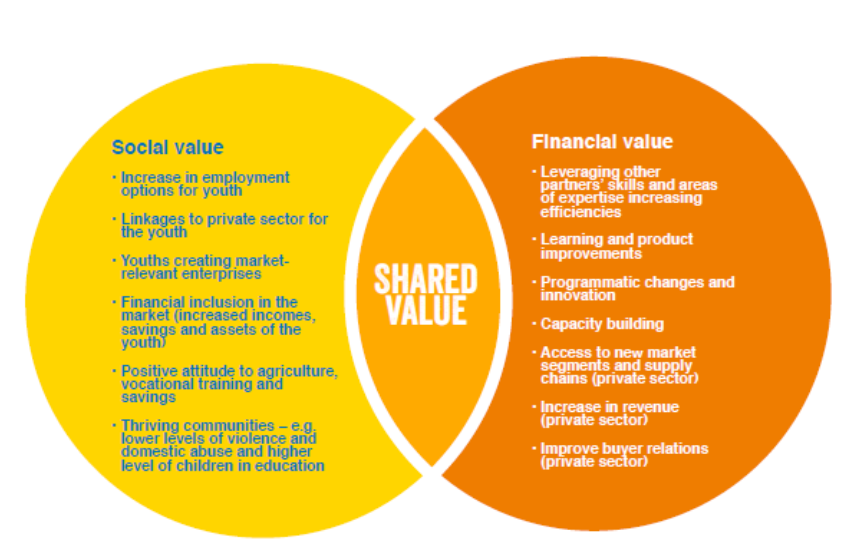In an effort to promote sustainable development, collaborations between environmental groups and businesses are essential. Green alliances between these two stakeholders have been established in order to ensure that the environment is being cared for properly.
These green alliances involve a mutual commitment by both parties towards sustainability goals with the aim of protecting our planet from further damage. Through such partnerships, businesses can gain access to new technologies while environmentalists can benefit from increased resources needed for their projects.
In this blog post, we will discuss what green alliances are and how collaborations between environmental groups and businesses contribute to sustainable development.
Table of Contents
An Overview of Green Alliances
A green alliance is a strategic partnership between businesses and environmental groups to promote sustainable development. These alliances are formed with the aim of reducing the negative impacts of human activities on the environment, while also creating economic opportunities for both parties involved.
What is a Green Alliance?
Green alliances involve two or more organizations coming together to create mutually beneficial solutions. The partnerships can be formal or informal, but they must have clear objectives and goals that are agreed upon by all parties involved. They may include collaborations between governments, non-governmental organizations (NGOs), corporations, universities, research institutions, communities, and other stakeholders in order to achieve sustainability objectives.
Benefits of Green Alliances
The benefits of forming green alliances are numerous. By working together towards common goals, businesses can gain access to new markets and resources while environmental groups can leverage corporate expertise and resources to further their own causes.
Additionally, these partnerships often lead to increased public awareness about important issues related to sustainability which helps drive consumer demand for environmentally friendly products and services.
Furthermore, green alliances help foster innovation through collaboration which leads to better solutions for tackling global challenges like climate change or resource scarcity.

(Source)
Types of Green Alliances
There are many different types of green alliances depending on the needs and objectives of each partner organization involved in the collaboration. These are just some of the few.
- Joint ventures between companies looking to develop new technologies.
- Cross-sectoral initiatives involving multiple stakeholders from different industries.
- Public-private partnerships focused on conservation efforts.
- Private sector investments into renewable energy projects.
- Corporate social responsibility programs aimed at improving local communities quality of life.
- Industry associations that are dedicated to promoting sustainable practices among members.
Examples of Collaborations between Environmental Groups and Businesses
Collaborations between environmental groups and businesses have become increasingly popular in recent years. These green alliances are beneficial for both parties, as they allow companies to reduce their environmental impact while also providing environmental organizations with the resources necessary to achieve their goals.
Why Collaborate?
Environmental groups and businesses can benefit from collaborating on projects that promote sustainability. For example, a business may partner with an environmental group to develop new products or services that reduce its carbon footprint or increase energy efficiency. This type of collaboration allows the company to gain access to expertise and resources while also helping the organization reach its goals more quickly.
Additionally, these collaborations often lead to positive public relations benefits for both parties involved.
Challenges Faced by Environmental Groups and Businesses
Despite the potential benefits of green alliances between businesses and environmental groups, there are some challenges associated with such collaborations.
One challenge is finding common ground between two very different entities. Businesses typically prioritize profits over sustainability initiatives, whereas environmental organizations prioritize conservation efforts above all else.
Additionally, many businesses may be hesitant about partnering with an outside organization due to concerns about loss of control or potential legal issues if something goes wrong during the project implementation process.
Finally, there can be a lack of trust between partners due to differing values or objectives which can make it difficult for them to work together effectively towards a shared goal.
Examples of Successful Collaborations
In recent years, there have been several successful collaborations between businesses and environmental organizations that demonstrate how effective such partnerships can be when done correctly.
For example, in 2022 Microsoft partnered with The Nature Conservancy (TNC) on a project aimed at restoring oyster reefs off the coast of Washington state as part of TNC’s effort to protect marine habitats from the destructive effects of fishing and shipping.
Additionally, Unilever has collaborated extensively with WWF since 2010 on various projects related to reducing water usage, increasing biodiversity, and promoting sustainable farming techniques.
How Green Alliances Help Achieve Sustainable Development Goals
Green alliances between businesses and environmental groups can help provide resources and expertise to support initiatives that address climate change, reduce pollution levels, conserve natural resources, create green jobs, and build resilient communities.
By working together with environmental groups, businesses can develop innovative solutions that will help them meet their sustainability goals.
Microsoft has collaborated with Conservation International (CI) to use technology to protect biodiversity hotspots around the world. This includes projects such as carbon sequestration in tropical forests and monitoring illegal fishing activities off coastlines.
Unilever has partnered with WWF-UK to reduce water use in its factories worldwide while protecting rivers from pollution caused by industrial waste discharge into them.
Additionally, Nestlé has teamed up with Greenpeace International to increase transparency about palm oil sourcing practices throughout its supply chain, as well as improve traceability standards for cocoa beans grown without deforestation or exploitation of workers.
Impact of Green Alliances on Society and Environment
Green alliances can bring about many benefits to society. These include:
- Increased awareness of environmental issues.
- Improved public health.
- Reduced poverty levels.
- Increased access to clean water and energy sources.
- Job creation in green industries.
- Economic growth through investments in renewable energy projects.
- Conservation of natural resources like forests or wetlands.
- Protection of endangered species from extinction due to human activities.
- Reduce carbon emissions by encouraging companies to switch from fossil fuels to renewable energy sources.
- Provide financial support for research into new technologies that could benefit the environment.
Although green alliances can bring positive outcomes for society and the environment, there are potential risks associated with these collaborations.
For example, if a company is given too much power over an environmental group, it could lead to the exploitation or abuse of resources which would be detrimental to all parties involved.
Additionally, these partnerships often require large amounts of money which can cause strain on budgets especially when it comes to small businesses or non-profit organizations that may not have enough funds available.
Finally, green initiatives can sometimes lead to the displacement of local communities if their land is taken away without proper compensation or consultation.
Best Practices for Establishing Effective Green Alliances
The first step in establishing a successful green alliance is identifying the goals of both parties. It’s important that each partner understands what they are looking to achieve and how their collaboration will help them reach those objectives.
Once these goals have been established, it’s time to create a plan for achieving them. This plan should include specific steps that need to be taken, as well as deadlines for completing each task. The plan should also outline any resources or funding needed from either party in order to make the partnership successful.
Once an effective green alliance has been established, it’s important that both partners remain committed to its success over the long term. To ensure this happens, regular communication between all parties involved is essential.
Additionally, clear expectations should be set from the beginning and regularly reviewed throughout the duration of the partnership so everyone remains on track with their shared objectives.
Finally, it can be helpful for partners to establish incentives or rewards when certain milestones are achieved in order to keep everyone motivated and engaged with their work together.
FAQs About Collaborations Between Environmental Groups and Business
What is environmental collaboration?
Environmental Collaboration and Conflict Resolution (ECCR) is a process by which a neutral, third-party facilitator works with agencies, and all stakeholders, to collaboratively prevent, resolve, and manage environmental issues.
What is an example of an environmental group?
An environmental group is an organization that works to protect and conserve the environment. Examples of such groups include Greenpeace, Sierra Club, Earthjustice, and The Nature Conservancy.
These organizations work to reduce pollution, protect wildlife habitats, promote sustainable energy sources, and advocate for climate change policies. They also often provide educational resources about the environment and how individuals can help protect it.
What is the main function of environmental policy?
Environmental policy is meant to minimize the impact of businesses on society and the natural environment.
Conclusion
Collaborations between environmental groups and businesses can have a positive impact on sustainable development. Green alliances are an effective way to bring together the resources of both parties in order to promote sustainability initiatives that benefit society and the environment.
By establishing best practices for forming green alliances, businesses and environmental groups can work together to create lasting solutions that will help protect our planet for future generations.
{“@context”:”https:\/\/schema.org”,”@type”:”FAQPage”,”mainEntity”:[{“@type”:”Question”,”name”:”What is a Green Alliance?”,”acceptedAnswer”:{“@type”:”Answer”,”text”:”
Green alliances involve two or more organizations coming together to create mutually beneficial solutions. The partnerships can be formal or informal, but they must have clear objectives and goals that are agreed upon by all parties involved. They may include collaborations between governments, non-governmental organizations (NGOs), corporations, universities, research institutions, communities, and other stakeholders in order to achieve sustainability objectives. “}},{“@type”:”Question”,”name”:”Why Collaborate?”,”acceptedAnswer”:{“@type”:”Answer”,”text”:”
Environmental groups and businesses can benefit from collaborating on projects that promote sustainability. For example, a business may partner with an environmental group to develop new products or services that reduce its carbon footprint or increase energy efficiency. This type of collaboration allows the company to gain access to expertise and resources while also helping the organization reach its goals more quickly.
Additionally, these collaborations often lead to positive public relations benefits for both parties involved. “}},{“@type”:”Question”,”name”:”What is environmental collaboration?”,”acceptedAnswer”:{“@type”:”Answer”,”text”:”
Environmental Collaboration and Conflict Resolution (ECCR) is a process by which a neutral, third-party facilitator works with agencies, and all stakeholders, to collaboratively prevent, resolve, and manage environmental issues. “}},{“@type”:”Question”,”name”:”What is an example of an environmental group?”,”acceptedAnswer”:{“@type”:”Answer”,”text”:”
An environmental group is an organization that works to protect and conserve the environment. Examples of such groups include Greenpeace, Sierra Club, Earthjustice, and The Nature Conservancy.
These organizations work to reduce pollution, protect wildlife habitats, promote sustainable energy sources, and advocate for climate change policies. They also often provide educational resources about the environment and how individuals can help protect it. “}},{“@type”:”Question”,”name”:”What is the main function of environmental policy?”,”acceptedAnswer”:{“@type”:”Answer”,”text”:”
Environmental policy is meant to minimize the impact of businesses on society and the natural environment. “}}]}





